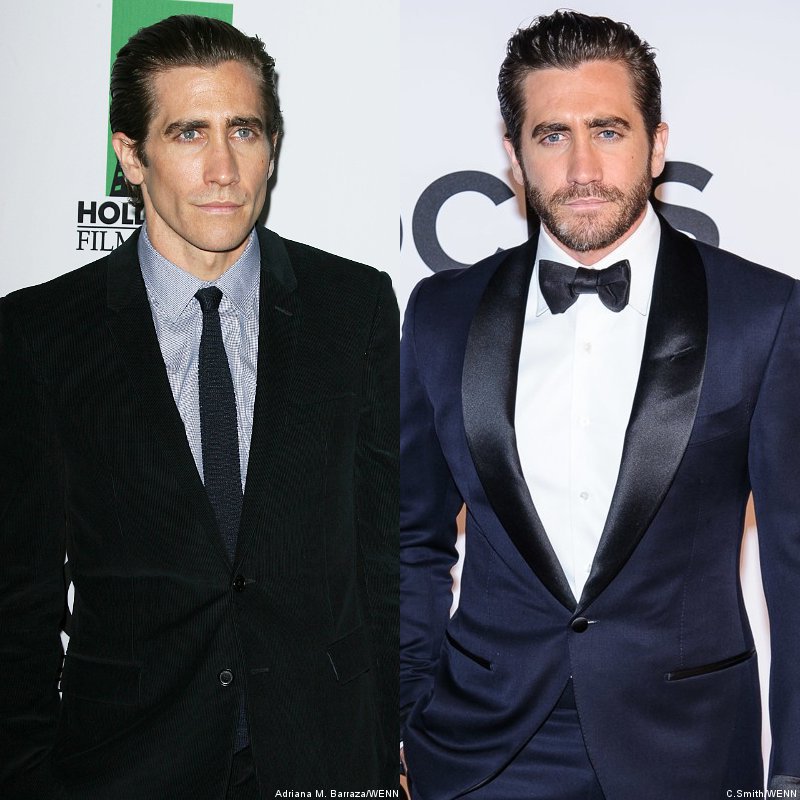Jake Gyllenhaal is no stranger to physical transformations for roles in Hollywood, but his latest weight loss journey for Road House has taken things to another level. Known for his intense dedication to his craft, Jake went from 205 pounds to 184 pounds, dropping an incredible 21 pounds and achieving a remarkable 5% body fat for the role.
But how did he do it? What motivated him, and what did his intense regimen look like? This is the story of Jake Gyllenhaal’s weight loss journey, shedding light on the sacrifices, the dedication, and the psychological resilience that helped him achieve his impressive transformation.

The Road to “Road House”: The Start of Jake’s Transformation
Jake’s transformation for Road House didn’t begin with a typical movie diet or gym plan. Instead, it was a mix of necessity for the role and his own drive to push himself to new limits.
In previous roles, Jake had undergone significant physical changes, like in Nightcrawler where he lost 30 pounds. But for Road House, the actor took things a step further. His character, a former UFC fighter, demanded a more cut physique—lean, strong, and defined. He was not just trying to get fit; he was aiming for a look that matched his character’s extreme physicality.
“I wanted to embody this character in every possible way,” Jake said in an interview about his transformation. “I needed to feel the physicality of this fighter, and to do that, I had to be in the best shape of my life.”
A Balanced Approach: The Diet and Workout Plan
Jake Gyllenhaal’s weight loss plan was a mix of intense exercise and a carefully structured diet, designed to help him shed fat while building muscle. His workout routine and diet were customized to meet the demands of his role, but they also reflected Jake’s commitment to achieving a healthy, sustainable lifestyle.
Diet: Clean, Lean, and Balanced
Jake’s diet was not about extreme restrictions or fasting. Instead, he focused on clean, whole foods—choosing meals that nourished his body while also aiding in fat loss. He avoided refined sugars and processed foods, turning to lean proteins, vegetables, and whole grains to fuel his workouts and support his body’s needs.
“I went for simple, healthy food. Lots of salads, lean meats, and healthy fats. It was all about keeping my energy up without overloading my system,” Jake explained.
One of Jake’s go-to meals during his diet was a high-protein kale salad, which was packed with nutrients but low in calories, helping him stay on track with his weight loss goals.
Intense Workouts: Strength Training and Cardio
To achieve his dramatic weight loss, Jake’s workout regimen was nothing short of intense. His workout plan included a mixture of strength training, cardio, and high-intensity interval training (HIIT). These workouts were tailored not only to help him lose weight but also to sculpt his body, building lean muscle that helped him achieve that low body fat percentage.
Jake worked out five to six days a week, focusing on weightlifting and cardio. His strength training routine included exercises like deadlifts, squats, and push-ups to build muscle mass and strength. Cardio, especially HIIT, was added to burn fat and increase his metabolism.
“I was doing a combination of cardio and weight training every day, and it was grueling,” Jake admitted. “There were times when I’d wake up sore, but I knew that was part of the process.”
The grueling workouts were also supplemented by a focus on flexibility to ensure that Jake’s body could handle the intensity of UFC-style fight scenes. Jake had to ensure his body was not only strong but agile and capable of performing in high-intensity action sequences.
Hydration and Recovery: The Unsung Heroes
When talking about his transformation, Jake has always emphasized the importance of hydration and recovery. Staying hydrated, getting enough sleep, and allowing his muscles to recover were critical to making sure he didn’t burn out during such an intense physical transformation.
“It’s not just about what you put in your body; it’s about how you treat it afterward,” Jake shared. “Hydration, rest, and keeping your body in a place where it can heal is just as important as the workout itself.”

Mental and Emotional Challenges: The Psychological Side of Weight Loss
While Jake’s physical transformation for Road House was demanding, it was equally a mental and emotional challenge. Losing such a significant amount of weight requires not only dedication to physical exercise and diet but also mental resilience.
Jake’s previous weight loss for Nightcrawler was also driven by the necessity to look gaunt and physically deprived, but for Road House, he wanted to build a powerful, lean body. This shift from weight loss to muscle gain required a significant change in mindset.
“It’s not easy to lose weight, especially when your body is so used to holding onto fat,” Jake revealed. “But it’s also about embracing the process. I had to be patient with myself and my body. Some days were harder than others, but I knew the payoff would be worth it.”
Jake’s transformation was a clear reflection of his dedication to the role and his determination to give his best performance. He approached this physical change with a sense of purpose and a focus on long-term health, not just short-term results.
Jake Gyllenhaal’s Weight Loss Timeline
Jake’s weight loss didn’t happen overnight. It was a gradual process that spanned several months. By sticking to a disciplined workout routine and clean eating, Jake gradually shed pounds, honing in on a physique that aligned with his character in Road House. His dedication allowed him to drop from 205 pounds to 184 pounds, shedding 21 pounds and reaching an astonishing 5% body fat. This dramatic change required months of hard work, discipline, and perseverance.
The Results: A New, Leaner Jake Gyllenhaal
The results were visible. Jake Gyllenhaal’s transformation was jaw-dropping, and fans couldn’t help but take notice. His lean, toned physique for Road House left many fans impressed. He didn’t just look great; he also felt healthier, stronger, and more agile—traits necessary for the intense action scenes he was preparing for.
“I feel great,” Jake shared after completing his transformation. “This is the strongest and healthiest I’ve felt in years. It wasn’t easy, but I’m proud of the journey I’ve been on.”
The transformation wasn’t just about the physical change but the mental clarity and emotional growth Jake experienced throughout the process. By pushing his body and mind to new limits, Jake proved that true transformation comes from within.
FAQ
-
How much weight did Jake Gyllenhaal lose?
Jake Gyllenhaal lost 21 pounds for his role in Road House, going from 205 pounds to 184 pounds, achieving a 5% body fat percentage. -
What did Jake Gyllenhaal eat to lose weight?
Jake focused on eating clean, whole foods, including lean proteins, vegetables, and whole grains, while avoiding processed foods and sugar. -
How did Jake Gyllenhaal lose weight for Nightcrawler?
For Nightcrawler, Jake lost 30 pounds by following an extreme diet consisting mostly of kale salad and chewing gum, alongside running and other intense activities. -
What was Jake Gyllenhaal’s workout routine for Road House?
Jake’s workout routine for Road House included a mix of strength training, cardio, and HIIT, with a focus on building muscle and burning fat. -
Did Jake Gyllenhaal use any weight loss medication?
No, Jake did not use weight loss medication. His transformation was achieved through exercise, diet, and mental dedication.
Jake Gyllenhaal’s Weight Loss Journey
Jake Gyllenhaal’s transformation for Road House is a powerful example of what happens when dedication, discipline, and a balanced approach to health and fitness align. His journey shows that lasting weight loss is about more than just the number on the scale; it’s about committing to a holistic approach to health—physical, mental, and emotional. Jake’s story inspires anyone looking to make a change in their lives, proving that with hard work and determination, anything is possible.